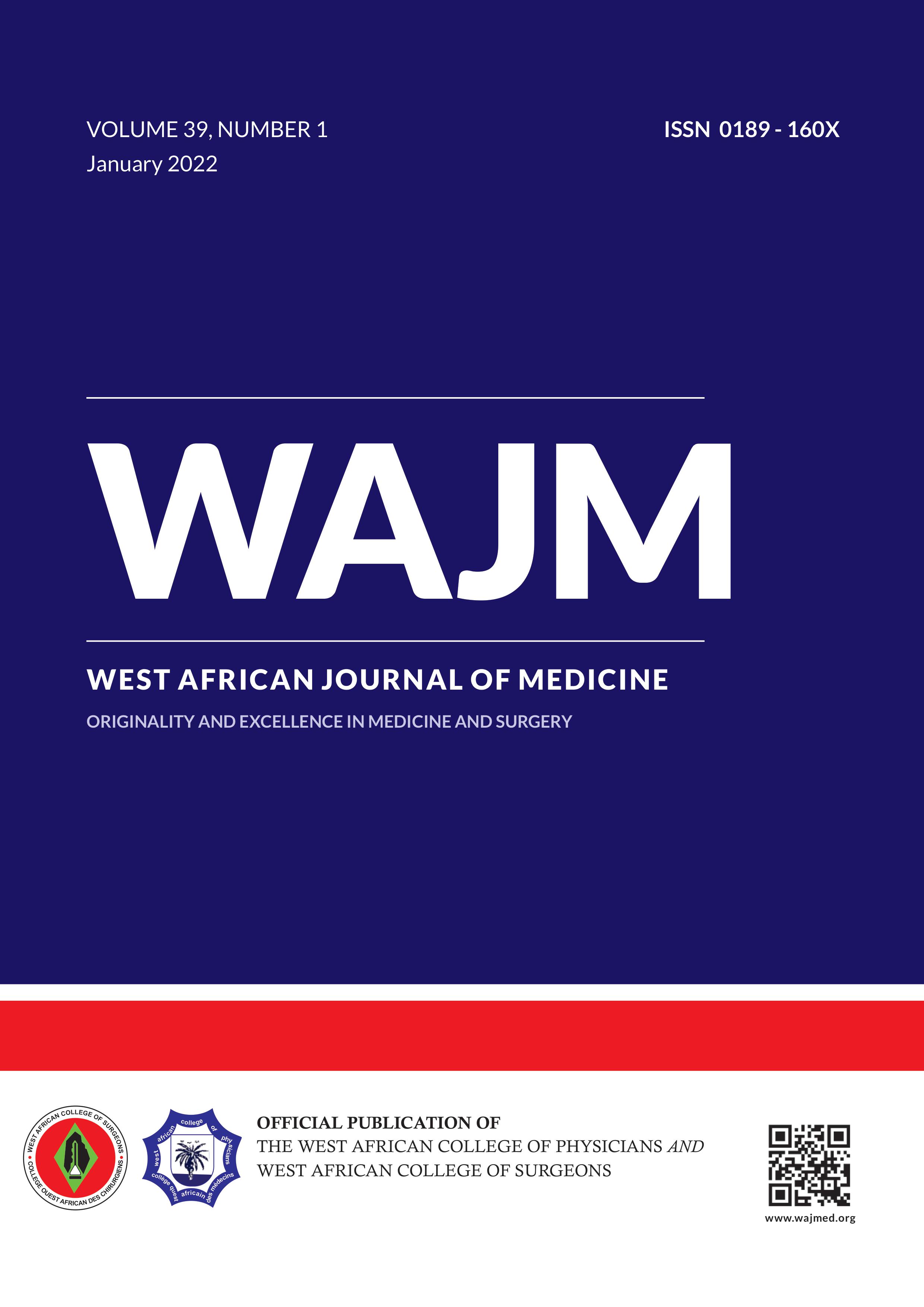ORIGINAL: Clinical Audit of Low Dose Prophylaxis Programme for Nigerian Children with Haemophilia
West Afr J Med. 2022 January; 39(1): 11-15
Keywords:
Factor VIIII concentrate; Haemophilia; Low dose prophylaxis; Nigeria; Quality of Life.Abstract
Introduction: The evidence of benefits for prophylaxis especially low dose prophylaxis is incontestable yet most children in developing countries as Nigeria do not have access to this treatment protocol.
Aim: The aim was to audit the low dose prophylaxis treatment in Nigerian children with haemophilia.
Methodology: A multicentre clinical audit of five haemophilia treatment centres; University of Nigeria Teaching Hospital Enugu, Lagos University Teaching Hospital, National Hospital Abuja, University of Port Harcourt Teaching Hospital Port Harcourt, and Federal Teaching Hospital Gombe. Eighteen children with mild-severe haemophilia were enrolled into low-dose prophylaxis treatment programme. The reduction of joint bleeding, improvement of joint function and Quality of Life (QoL) during prophylaxis were analysed.
Results: In total 18 children - 17males and 1 female (median age 8 years) were enrolled. The median duration of observation was 7 months (range 3-15months). Seven of the children were on primary prophylaxis (41%) while 10 of the children (59%) were on secondary prophylaxis. The number of joint bleeds decreased from a total of 162 (individual range 5-20, mean 10.3) to 42 (range 0-7, mean 3.0) during the observation period with an overall reduction of 74%. Joint function improved in 94.1% of disease joints, while only 5.6% reported no improvement (due to poor compliance). School attendance improved in all subjects, sports participation and daily activity improved moderately.
Conclusion: Low dose prophylaxis was beneficial in reduction of joint bleeds, improvement of joint function and improvement of QoL of Children with haemophilia in Nigeria.
Authors T U Nwagha 1, H C Okoye 1, C E Udo 2, S Yuguda 3, K I Korubo 4, T A Adeyemo 5

Published
Versions
- 2022-06-20 (2)
- 2022-06-20 (1)

